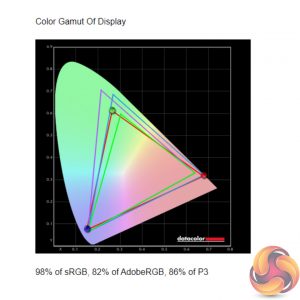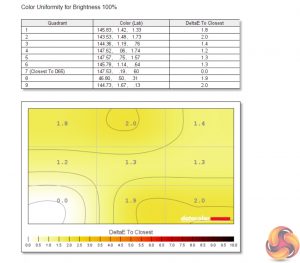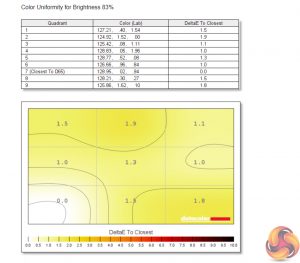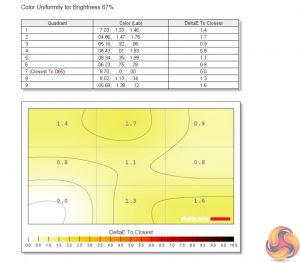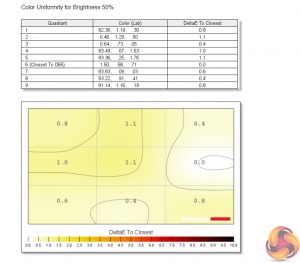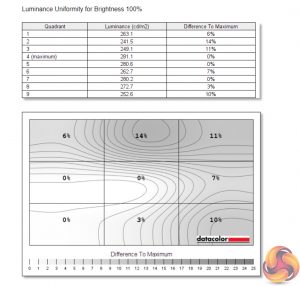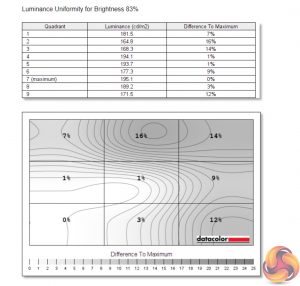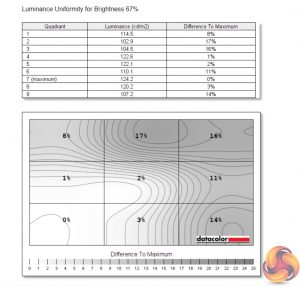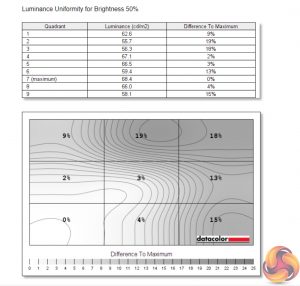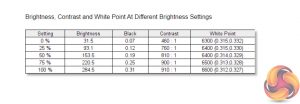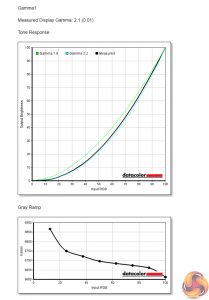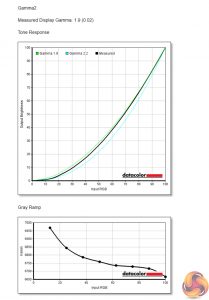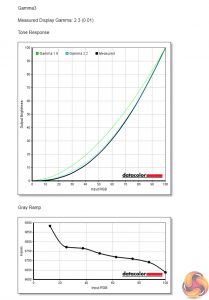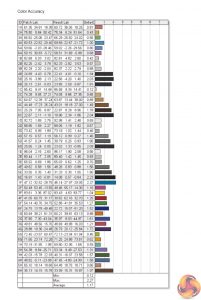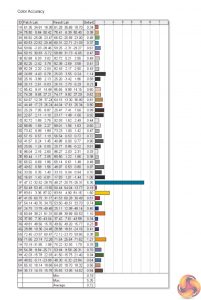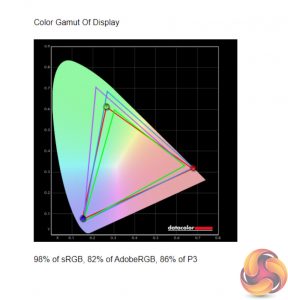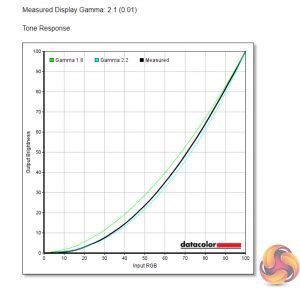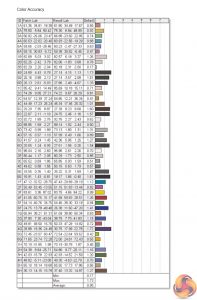Our main test involves using a DataColor SpyderX Colorimeter to assess a display’s image quality. The device sits on top of the screen while the software generates colour tones and patterns, which it compares against predetermined values to work out how accurate the screen is.
The results show –
- A monitor’s maximum brightness in candelas or cd/m2 at various levels set in the OSD.
- A monitor’s contrast ratio at various brightness levels in the OSD.
- The brightness deviation across the panel.
- The black and white points.
- The colour accuracy, expressed as a Delta E ratio, with a result under 3 being fine for normal use, and under 2 being great for colour-accurate design work.
- The exact gamma levels, with a comparison against preset settings in the OSD.
We first run this test with the display in its default, out-of-the-box state, with all settings on default. We then calibrate the screen using the Spyder software and run the test again.
Pre-calibration
Starting with gamut coverage, the U28G2XU does well here, but we have seen better results from other IPS panels – it reports 98% sRGB coverage, 82% AdobeRGB and 86% DCI-P3.
Colour uniformity is very good, especially at lower brightness levels – there's hardly any variation with the screen at 50% brightness, and only a touch more at 100%.
Luminance uniformity is more middling though, with the top and right sides of the panel deviating by up to 19%. At 100% brightness however, there was no more than a 14% difference to maximum which is a bit better.
Many users may well want to keep this screen at 100% brightness too, as even then it only hit just over 280 cd/m2, which isn't an overly impressive result. It is absolutely fine to use in most occasions, but I did find myself want more from the backlight on a particularly sunny day.
Contrast is also reasonable for an IPS panel, hitting 910:1, while it is good to see a white point of 6600K at peak brightness, which is only fractionally off the 6500K ideal.
The U28G2XU offers three gamma settings. They are all spaced evenly, from gamma 1.9, to 2.1, to 2.3, but for reasons unclear to me the settings themselves are neither in ascending or descending order – Gamma 1 reports a value of 2.1, then Gamma 2 drops to 1.9, before Gamma 3 goes up to 2.3.
As for colour accuracy, using the monitor's default Warm profile, we saw an average deltaE of 1.17 – a very impressive result. However, we also tried the monitor's sRGB profile which dropped the average to just 0.72, which is even better, though we can see one of the blue channels was very aberrant, with a delta value of 5.35.
Post-calibration
After calibration, we can see not a whole lot has changed. Gamut and gamma reporting is the same as before, contrast has even dropped slightly, though the average deltaE – using the Warm profile – has dropped to just 0.95, a small improvement over the pre-calibration result.
Be sure to check out our sponsors store EKWB here
 KitGuru KitGuru.net – Tech News | Hardware News | Hardware Reviews | IOS | Mobile | Gaming | Graphics Cards
KitGuru KitGuru.net – Tech News | Hardware News | Hardware Reviews | IOS | Mobile | Gaming | Graphics Cards



